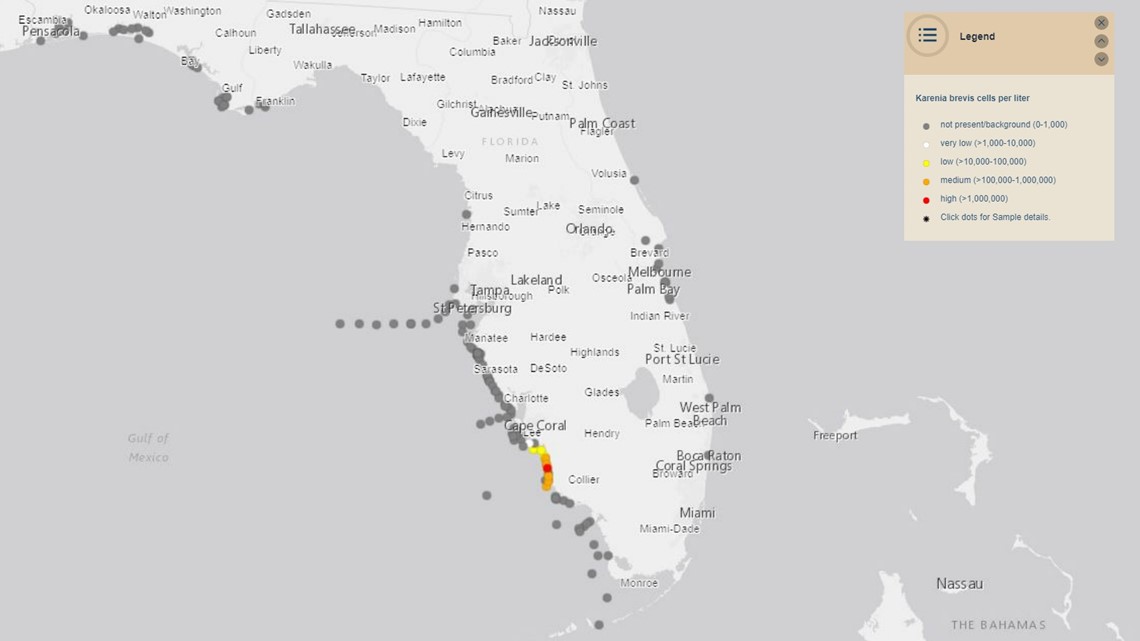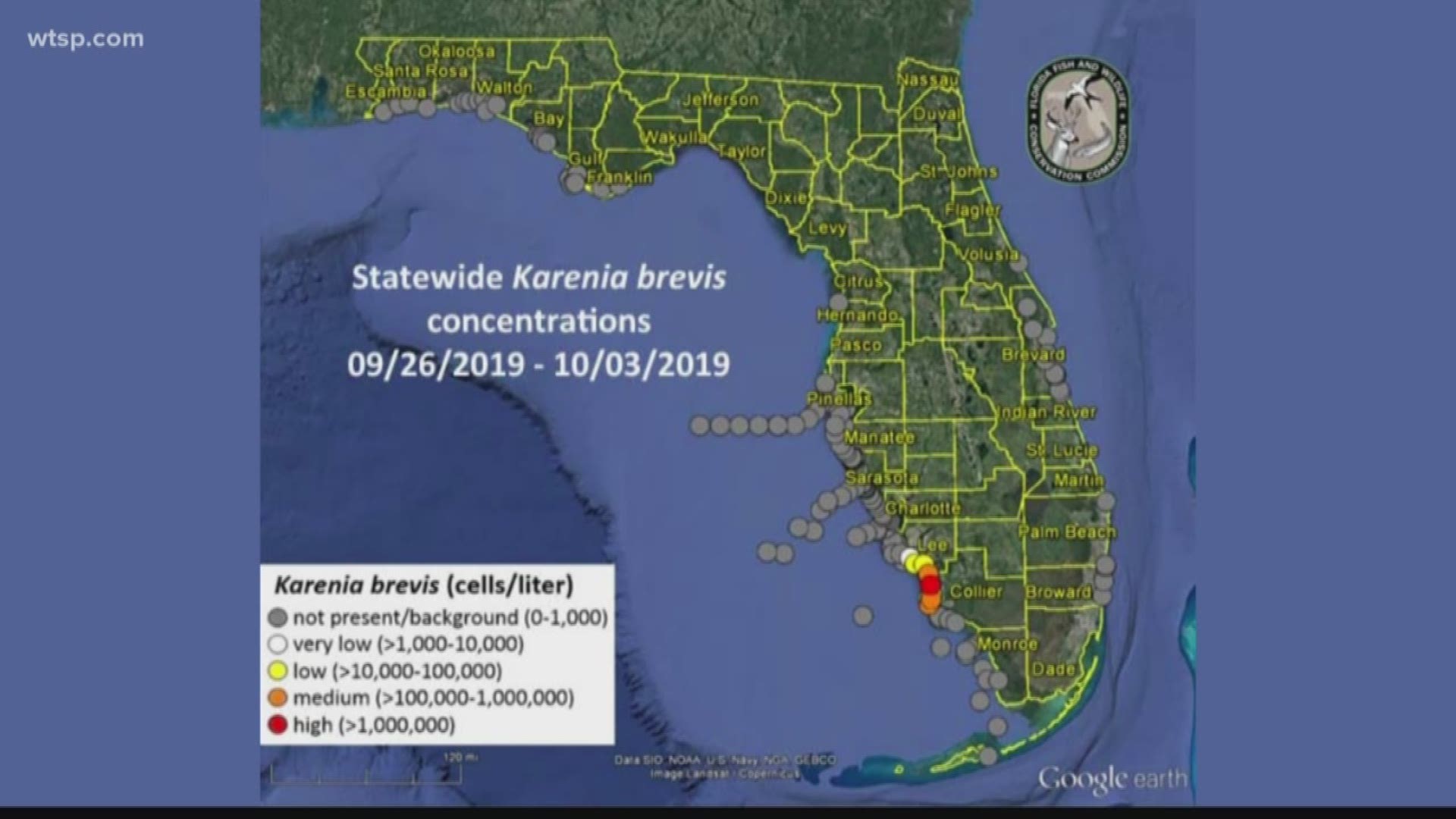TAMPA, Fla. — Red tide is back.
The Florida Fish and Wildlife Conservation Commission says the ride tide organism, Karenia brevis, has been found at bloom concentrations in southwest Florida and at background levels in northwest Florida within the last week.
The organism was found at background concentrations offshore of Pinellas and Hillsborough counties. It was also seen at low levels around Lee County and background to high concentrations in the Collier County area. Fish deaths have been reported in several locations around Collier County, along with respiratory irritation.
Further north, background concentrations of K. brevis were discovered in Okaloosa and Gulf counties.
Florida's east coast didn't have any red tide in the past week.
Another status report will be issued on Oct. 11. In the meantime, people can click here for the daily sampling map.


What is red tide?
Red tide made headlines last year as it caused problems for beachgoers, marine life and businesses around Florida.
Red tide is a “harmful algal bloom,” according to the National Oceanic and Atmospheric Administration.
The blooms happen when the colonies of algae start to grow out of control and produce powerful toxins that harm and even kill marine life, NOAA reports. People also can be affected by red tides. They can experience eye irritation, respiratory issues, asthma and in rare occurrences, death.
If your skin is prone to irritation, you should definitely avoid red tide water. And, if you do get irritated after swimming in red tide, get out right away and thoroughly rinse yourself with fresh water. People with respiratory issues like asthma or bronchitis should definitely avoid red tide areas -- especially when winds are blowing ashore, according to Florida health officials. If you begin to experience respiratory problems, leave the beach right away and find air conditioning. If your condition worsens, see a doctor.
Pets can be affected by red tide, too. If you live near the beach, think about taking your animals inside to prevent respiratory irritation. And, if you're at the beach, don't allow your pets to play with dead fish or foam.
In Florida, the most well-known red-tide-causing organism is known as Karenia brevis, which blooms in the Gulf of Mexico almost every year -- usually in late spring or early fall, according to the FWC. The FWC says Florida's red tides originate in nutrient-poor water that's 11 to 46 miles offshore. Red tides can last anywhere from a few weeks to longer than a year, depending on wind, water, currents, sunlight and other factors.
Researchers continue to study red tide and possible ways to control it, but so far there’s no magic solution. The harmful effects of red tide are caused by the toxins released when the organism dies.
What other people are reading right now:
- Florida teen drowns after rescuing mom, child from strong current
- Hazmat team responds to suspicious bag at Tampa International Airport
- Oregon doctor says his sperm was improperly used to father at least 17 children
- Two restaurants in Jacksonville facing lawsuits because of Cyclospora outbreak
- Nurse accused of inappropriate conduct with dementia patient
FREE 10NEWS APP:



